SERVICE
Non-Destructive Testing
Non-Destructive Testing
Our NDT personnel are managed and qualified in accordance with NAS410, EN4179, and EASA UG.CAO.00161 requirements.
For each inspection method, we employ Level 3 certified personnel who have successfully passed external audits conducted by BINDT (British Institute of Non-Destructive Testing).
Note: Radiographic Testing (RT) is excluded from this certification scope.
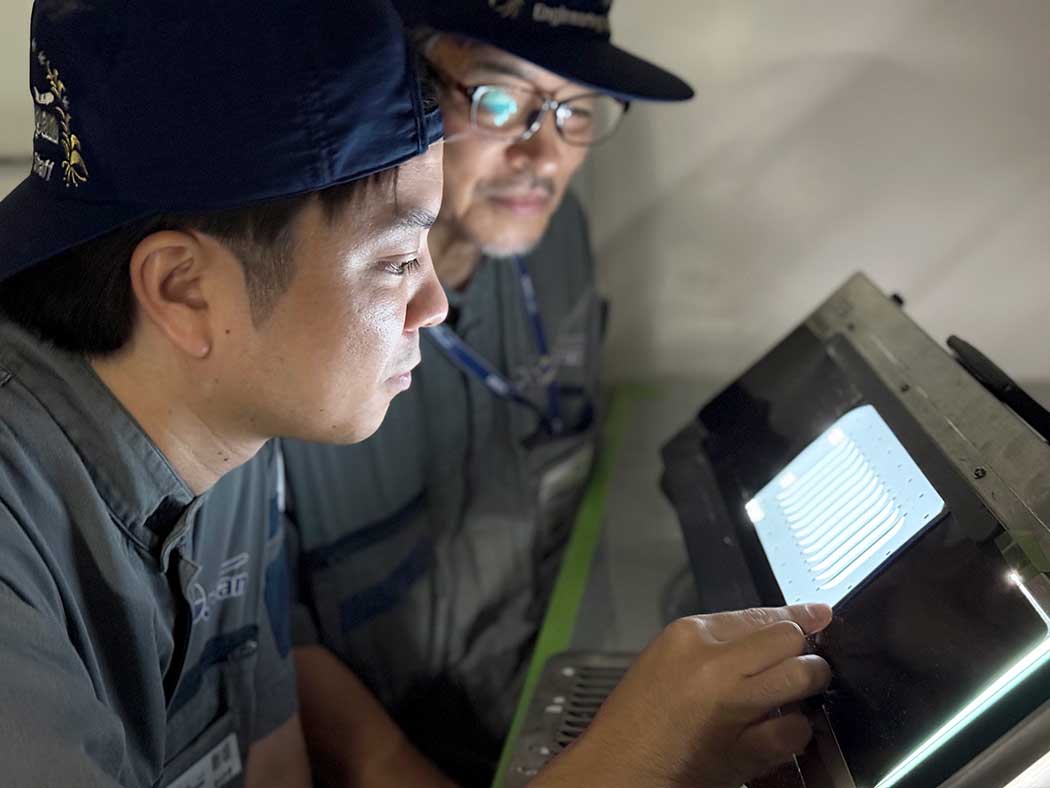
Radiographic Testing (RT)
Radiographic Testing (RT) is a non-destructive testing method used to visualize the internal structure of objects that cannot be seen with the naked eye. By irradiating the object with X-rays and capturing internal images, it allows for detailed examination without disassembly. In aircraft maintenance, X-ray inspection is commonly used to detect cracks in components, identify water ingress in honeycomb structures, and inspect the quality of welds.
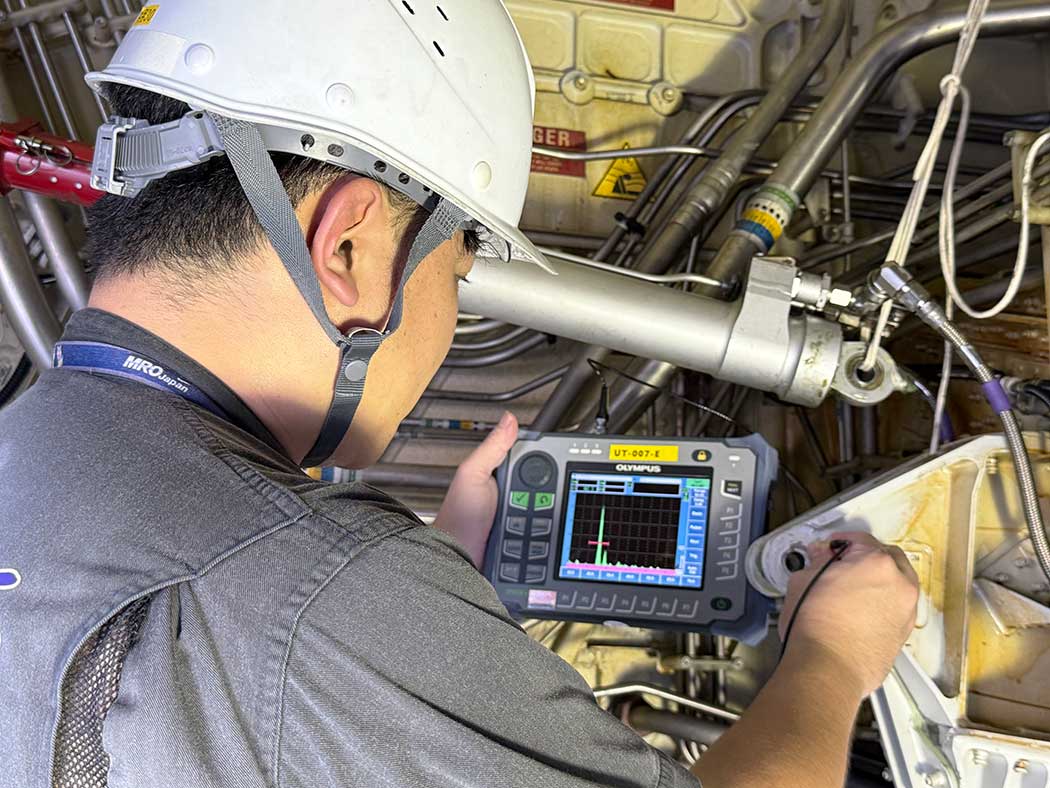
Ultrasonic Testing (UT)
Ultrasonic testing (UT) is a non-destructive inspection method that uses high-frequency sound waves to detect surface and internal flaws in materials. Ultrasonic waves are transmitted into the object, and the reflected echoes are analyzed to estimate the location and size of any defects based on their amplitude and the time of flight. This technique is applicable not only to metallic materials but also to the detection of delamination within composite structures, such as honeycomb panels.
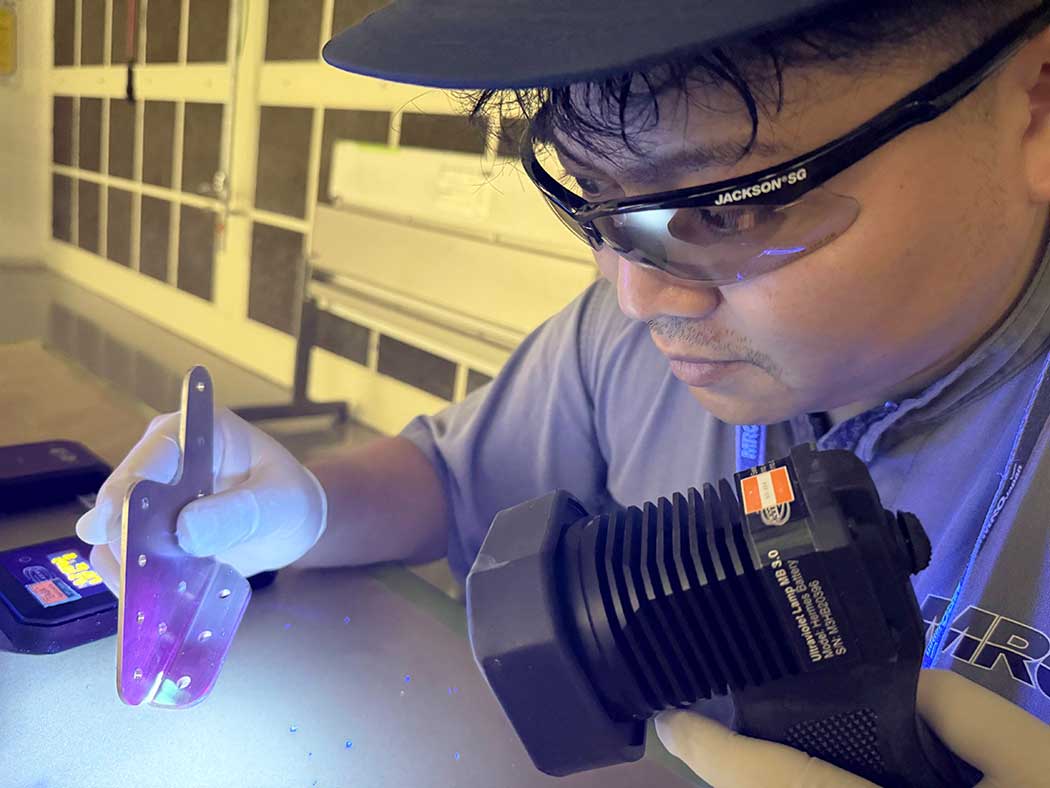
Liquid Penetrant Testing (PT)
Liquid Penetrant Testing (PT) is a non-destructive testing method used to detect surface-breaking defects. A liquid penetrant containing fluorescent dye is applied to the surface, where it seeps into cracks or discontinuities. After excess penetrant is removed, the surface is examined under ultraviolet (black) light, causing any penetrant trapped in flaws to fluoresce and reveal their location. This method offers high sensitivity for detecting fine cracks and open surface defects and can be applied to a wide range of metallic and non-metallic materials.
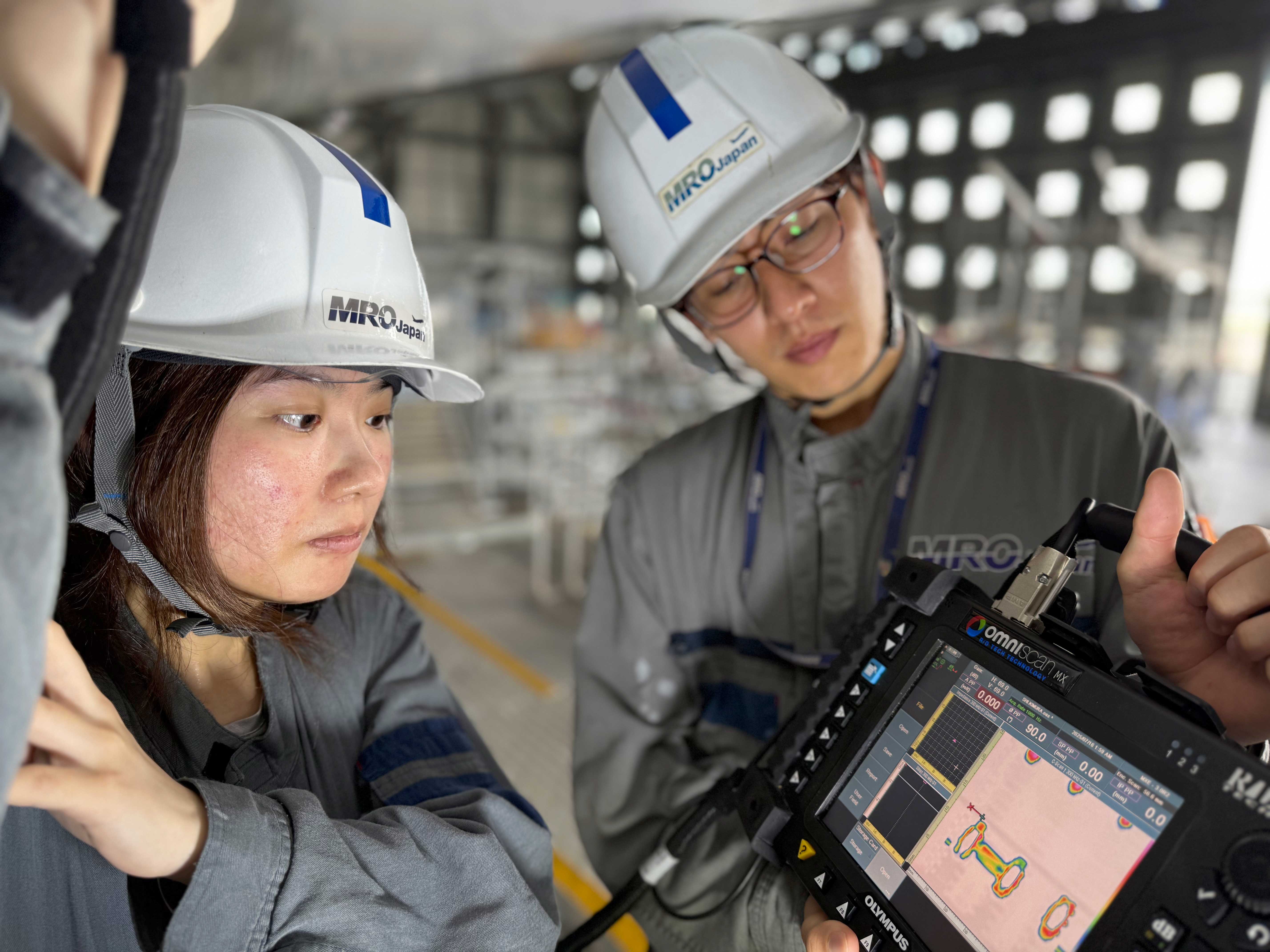
Eddy Current Testing (ET)
Eddy Current Testing (ET) is a non-destructive testing method used to detect small surface and near-surface defects in conductive materials that are not visible to the naked eye. An alternating current is passed through a coil in the probe, generating an electromagnetic field that induces eddy currents in the material. Variations in these currents, caused by flaws such as cracks, corrosion, or material thinning, are measured and analyzed to identify the defect’s presence and characteristics.
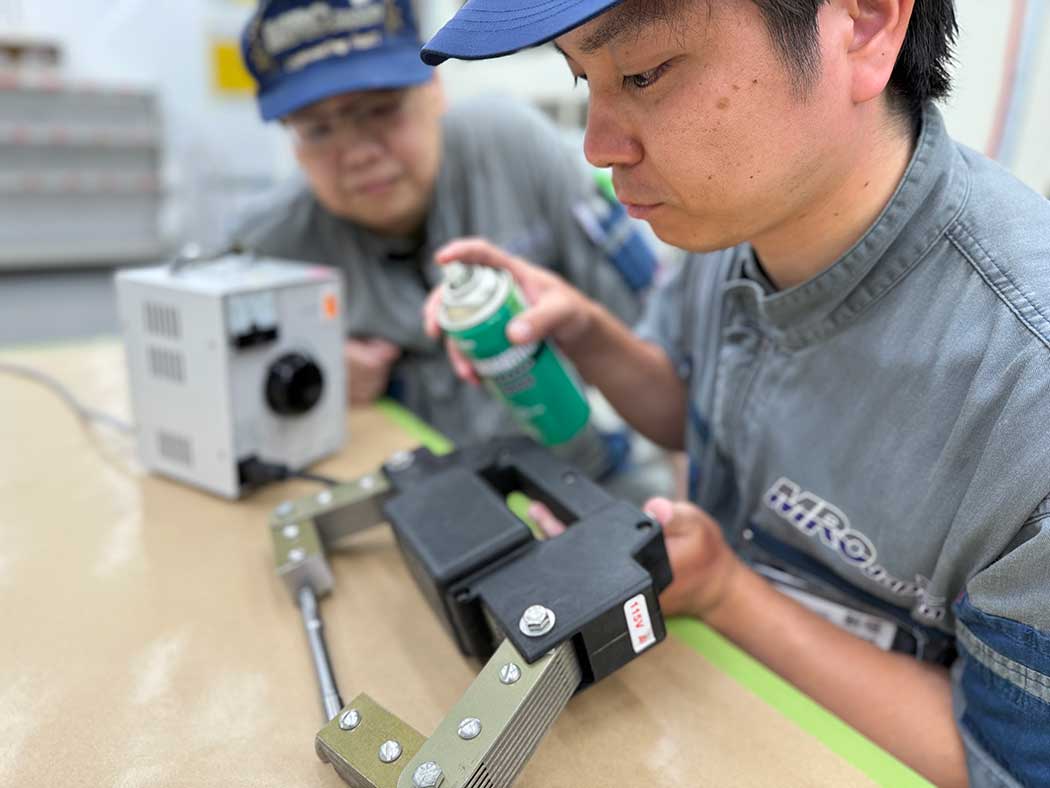
Magnetic Particle Testing (MT)
Magnetic Particle Testing (MT) is a non-destructive testing method used to detect surface and near-surface defects in ferromagnetic materials. When the material is magnetized, discontinuities cause magnetic flux leakage. Finely divided magnetic particles, often coated with a fluorescent dye, are applied to the surface and are attracted to the leakage fields, forming visible indications of the defect. Under ultraviolet (black) light, these indications fluoresce, allowing defects to be clearly detected.

